The photometry of MUSE field UDF05
Muse field UDF05 is a 1x1 arc-minute field centered at Right Ascension 03:32:39, and declination -27:47:14, within the Hubble UDF. The HST image of this region, seen through the F606W filter and resampled onto the pixel grid of the MUSE images of UDF05, is shown below.
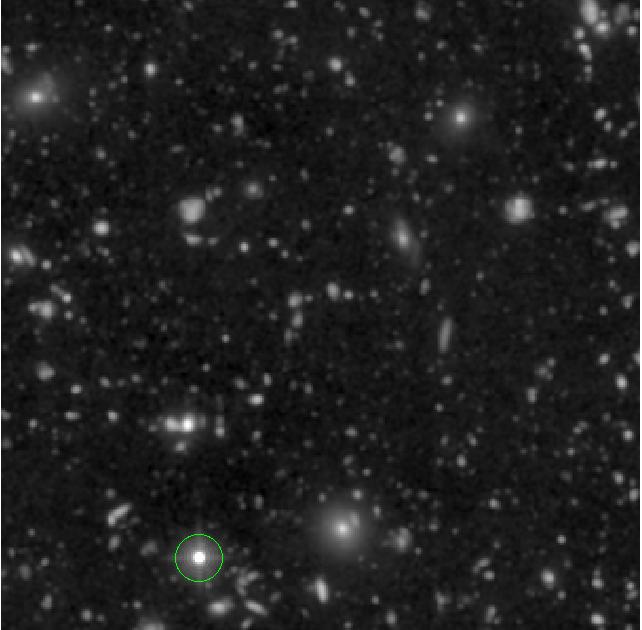
This field contains a bright star which should be excluded from the fit to obtain a good fit for all other sources between the MUSE and HST images, as described in the pitfalls section. The output of the following command, including the plot shown below it, show the poor fit that is obtained if the star is not excluded from the fit:
% fit_photometry hst_F606W_for_UDF05.fits wfc_F606W_UDF05.fits --fix_beta=2.8 --hardcopy jpeg# MUSE observation ID Method Flux FWHM beta Flux x-offset y-offset
# scale (") offset (") (")
#--------------------------------- ------ ------ ------ ------ -------- -------- --------
wfc_F606W_UDF05 image 1.0572 0.7027 2.8000 0.04707 -0.00697 0.00151
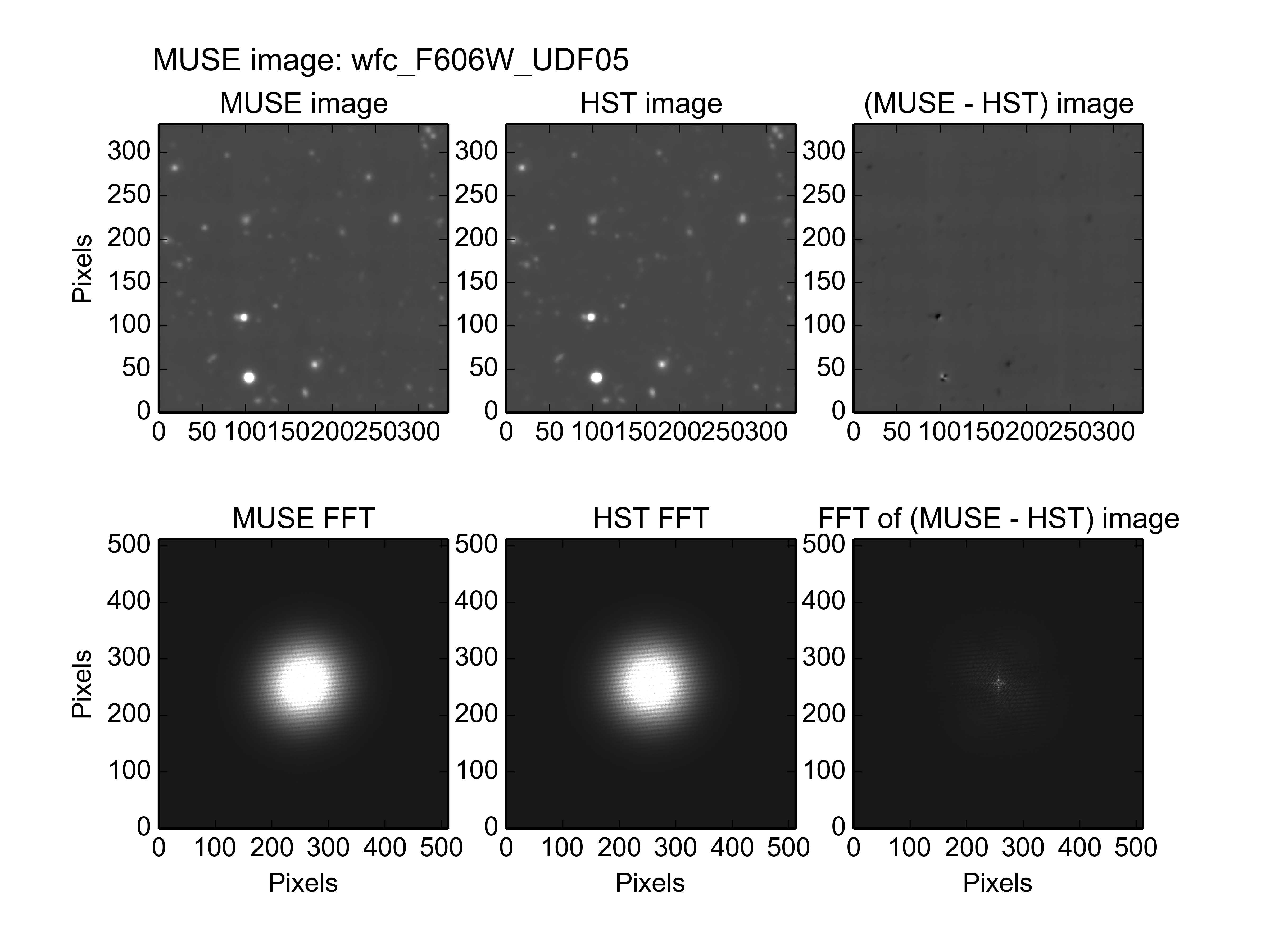
The contents of the residual image indicate that this is a poor fit. If one looks closely at the residuals of sources other than the star, they all have a slightly dark half and a light half, as though the HST and MUSE images were shifted slightly relative to each other. This is because the star itself moved between the HST and the MUSE observations. The fitted pointing error is dominated by the shift of the star, because the star is the brightest object in the image.
If the star is excluded from the fit, as recommended in the
pitfalls section, by passing
exclude_udf_stars.reg
region file to the fit_photometry script, then
the results are as follows:
% fit_photometry ~/muse/images/UDF05/hst_F606W_for_UDF05.fits ~/muse/images/UDF05/wfc_F606W_UDF05.fits --regions=regions/exclude_udf_stars.reg --fix_beta=2.8 --hardcopy jpeg
# MUSE observation ID Method Flux FWHM beta Flux x-offset y-offset
# scale (") offset (") (")
#--------------------------------- ------ ------ ------ ------ -------- -------- --------
wfc_F606W_UDF05 image 0.9402 0.7038 2.8000 0.05419 0.04955 -0.05088
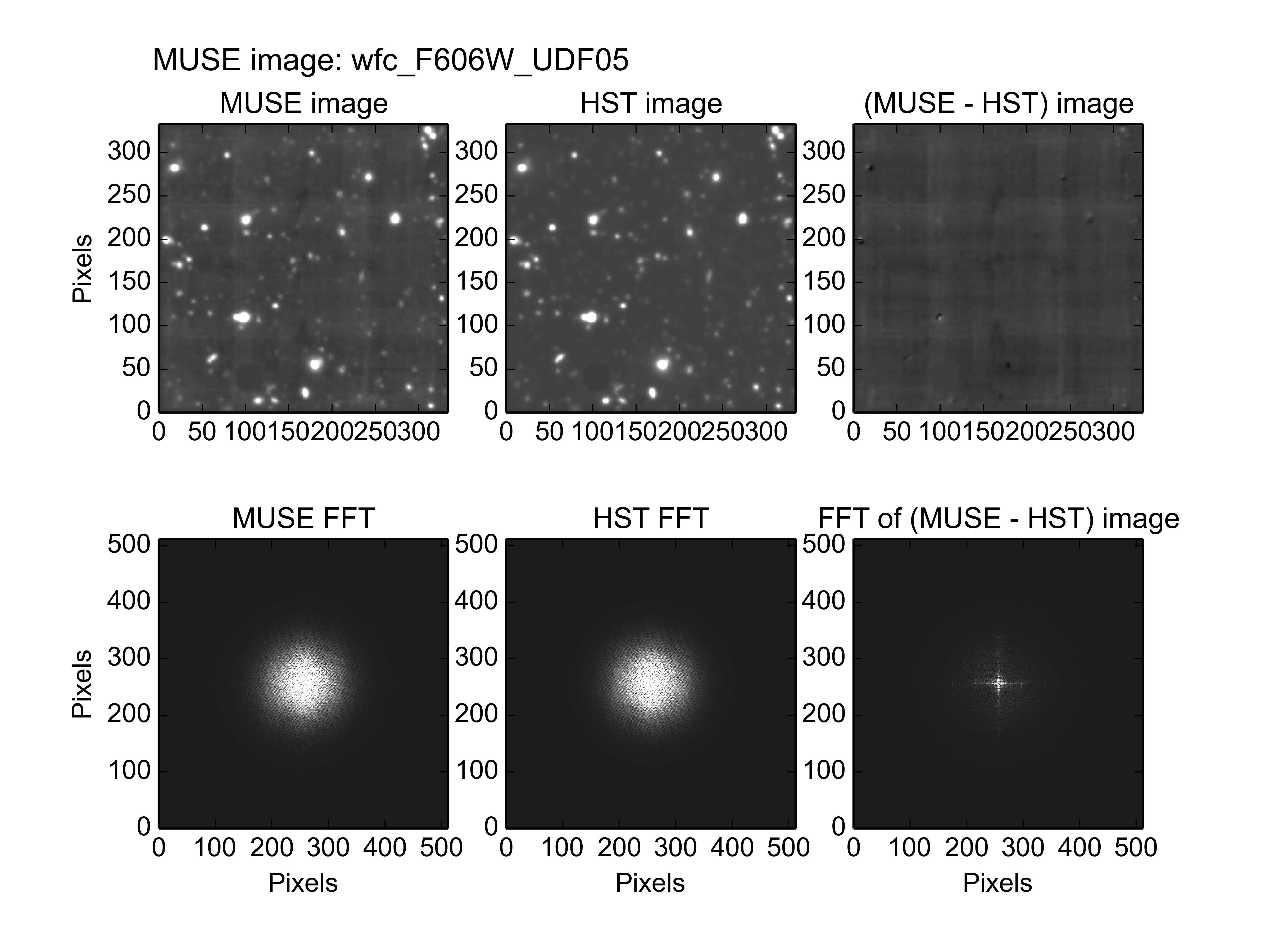
The residual image is now dominated by the instrumental background of the MUSE image, but there are still clear residuals from other sources. Oddly, most of the residual sources exhibit a dark half and a light half, as though the MUSE and the HST images were shifted with respect to each other. Even more odd, is the fact that the remainder of the bright source in the lower left half of the image appears to have been shifted in a different direction to the sources in the upper right half of the image. Fortunately the provenance of the MUSE image provides a reasonable explanation for this, as described below.
The MUSE UDF05 image that was used in the above examples, was actually extracted from a cube that contained a mosaic combination of all of the MUSE UDF fields. At the time of writing, there was no cube of the combined UDF05 exposures. Only two cubes were avaiable; a mosaic of all of the fields, and a cube of the UDF10 field. So to obtain high SNR photometric fits for the UDF05 field, the only practical option was to extract an image of the UDF05 field from the mosaic cube. Unfortunately in the mosaic, the UDF10 field overlaps the top right half of the UDF05 image, and its greater integration time means that it dominates that part of the image. As a result, it is not surprising that a single pointing-error solution does not fit the whole image. Indeed, the other fitted parameters are likely affected by this too.
In this case, a fit that is restricted to a small area centered on the star is likely to provide a more reliable estimate of the PSF. Unfortunately the flux scale-factor will be affected by the faint-star effect, described in the pitfalls section, and the fitted pointing-error will be affected by the proper motion of the star. When the fit is performed to the star, the results are as follows:
% fit_photometry hst_F606W_for_UDF05.fits wfc_F606W_UDF05.fits --regions=udf05_star.reg --fix_beta=2.8 --hardcopy jpeg
# MUSE observation ID Method Flux FWHM beta Flux x-offset y-offset
# scale (") offset (") (")
#--------------------------------- ------ ------ ------ ------ -------- -------- --------
wfc_F606W_UDF05 image 1.0875 0.7072 2.8000 -1.54256 -0.00722 0.00376
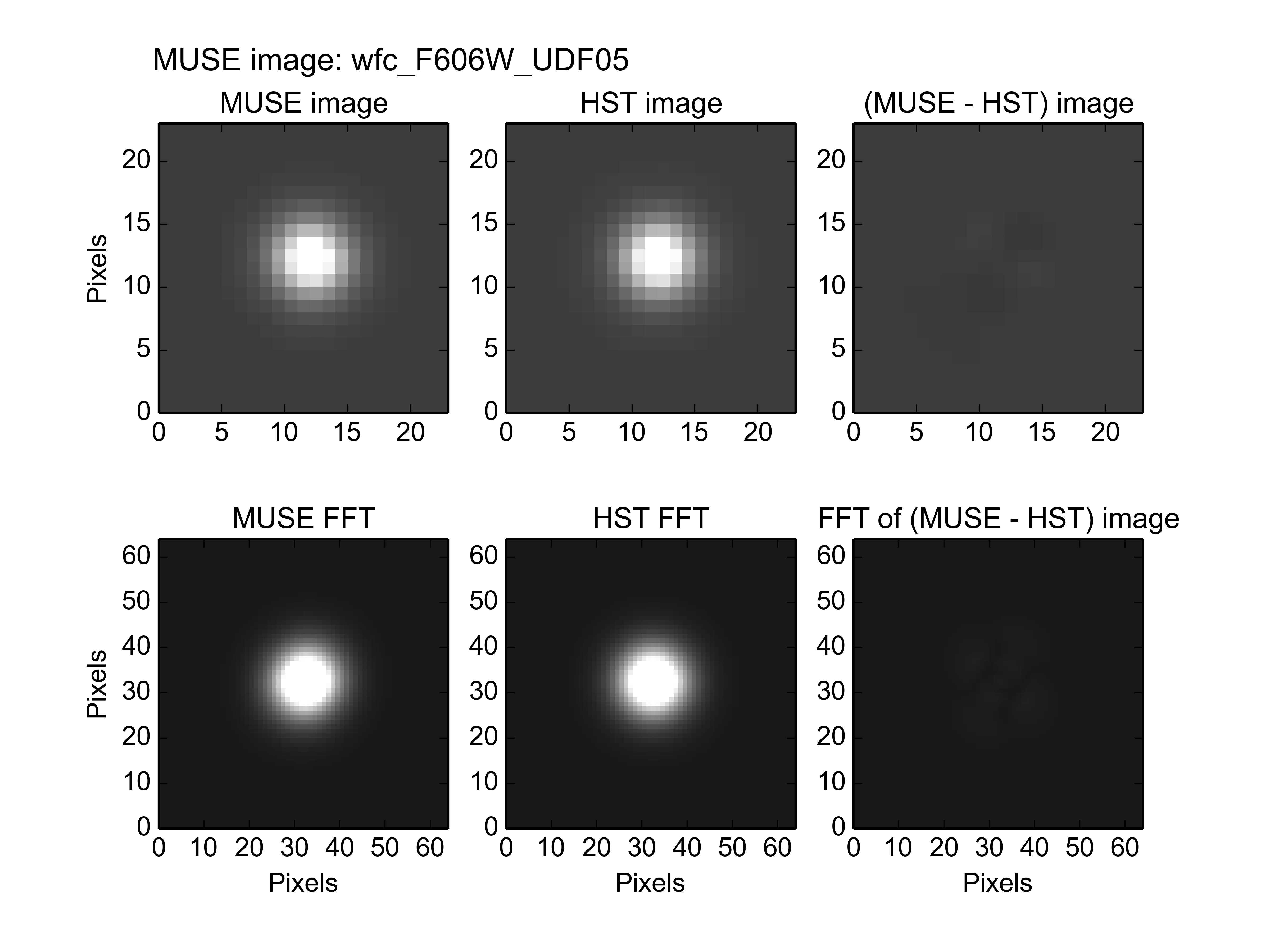
The vector difference between the X,Y pointing errors of the image-fit with the star excluded, and the fit with to the stellar image, gives an apparent shift of about 0.08 arcsec. Spread over the 11 years that elapsed between the HST observation of the UDF and the MUSE observations, this implies that the star has a proper motion of about 7 mas/year. Given the uncertainty of the image-fit with the stars excluded, it isn’t clear how much confidence to place in this result, but it is not too far from the value of 8.84±0.66 mas/year that Pirkal et al (2005) reported for this star (UDF 3166) in [1].
FWHM versus wavelength
The examples of the previous section operated on images that had the spectral response curve of the HST F606W filter. If similar fits are also performed to MUSE UDF05 images that have the spectral response curves of other HST filters, then the variation of the fitted FWHM of the PSF can be obtained versus wavelength. In the following diagram, the best-fit values of the PSF FWHM are plotted versus the pivot wavelength of these filters. The results of 2 different sets of fits are plotted. The first fit was to everything in the UDF05 images except for the bright star, which was excluded with a region file. The second fit was limited to a region of 3 arcseconds radius, centered on the star.
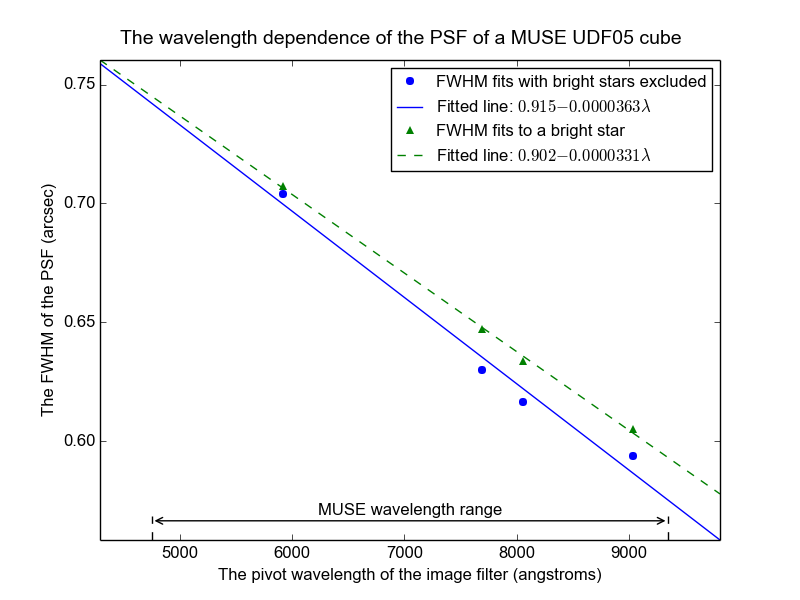
The star is outside the area of UDF05 that is contaminated by the UDF10 observations, so the FWHMs fitted to the star should be believed more than those fitted to the image with the star excluded.
Although not shown above, if the best-fit line for the FWHMs of the UDF10 field (see the udf10 section) is added to the above plot, the FWHMs that were fitted to the UDF05 image, lie about half way between that line and the FWHMs fitted to the star in UDF05. This backs the theory that the overall image fit is finding photometric parameters that represent an average between the UDF05 observations and the UDF10 observations.
Footnotes